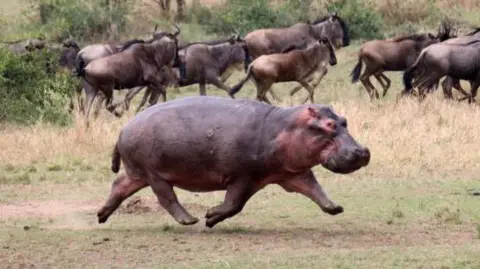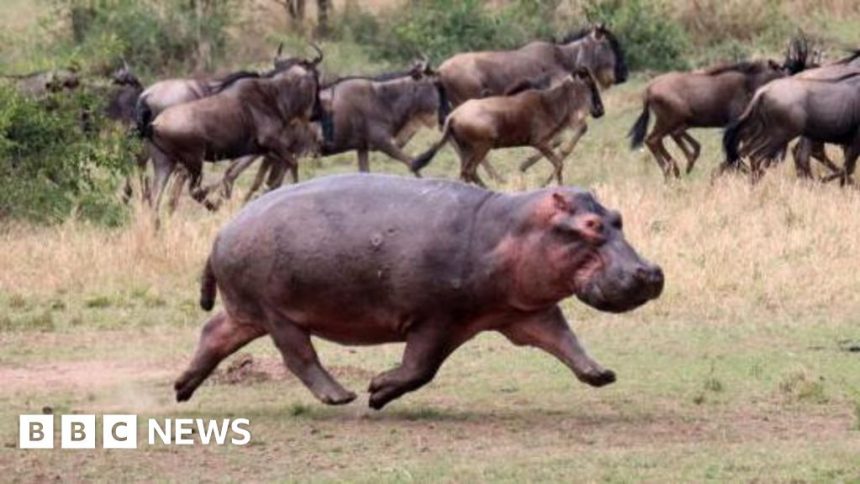Hippos can ‘glide through the air’ says zoo study
 Getty
GettyHippos can trot so fast they can glide through the air for a period of time, according to animal experts.
Research from the Royal Veterinary College (RVC) suggests that all four of their feet can leave the ground for up to 0.3 seconds at a time.
The discovery was made after two hippos at Flamingo Land in North Yorkshire were filmed moving in their paddock.
Kieran Holliday, from the zoo and theme park resort near Pickering, said the study had led to new discoveries around “hippo locomotion”.
Hippos are among the largest land animals, weighing up to two tonnes.
Previous studies had suggested the animals were similar to elephants in often using a standard four-footed (quadrupedal) walk, with a footfall sequence of left hind, left fore, right hind, right fore.
However, Prof John Hutchinson and former RVC undergraduate student Emily Pringle looked into this further as they collected video footage of two hippos moving around at Flamingo Land.
‘Really impressive’
When comparing their videos to online footage of hippos moving, they found the animals were able to almost trot, even when walking slowly or running quickly.
Prof Hutchinson, who was the lead author of the study, said it was “really impressive” to see how hippos got airborne when they moved quickly.
He said: “It’s hard to work with hippos as they tend to stick to the water and very seldom are trained to be studied in zoo collections.
“They’re also very dangerous. That’s part of the reason why science knew little about how hippos move before our research.
“We’re thrilled to provide the first study purely focused on revealing how hippos walk and run.”
“We were pleasantly surprised to see how hippos get airborne when they move quickly.”
Flamingo Land science and conservation officer Mr Holliday said: “Understanding more about the species we work with will only help us to improve the care we can give them in the future, and the fact that this paper has uncovered possible new discoveries into hippo locomotion could have positive impacts to the wider zoo community in regards to husbandry and enclosure design.”
Follow BBC Yorkshire on Facebook, X (formerly Twitter), and Instagram. Send your story ideas to yorkslincs.news@bbc.co.uk.







